Teaching STEM? Tips for Summer Planning
A MiddleWeb Blog

What if you don’t have a “STEM curriculum” to follow – or what if your curriculum doesn’t meet the basics for the integrated STEM program you want to teach? Invest some time into planning now and you’ll be in great shape for the year ahead.
Perhaps you are working with other teachers to plan STEM lessons. If so, and you’re in a position to spend some hours thinking and planning together during the break, then consider tackling some of the questions below, in no particular order.
If you are working alone, use these questions as a guide for puzzling through some issues you need to consider anytime you plan a STEM lesson. I suggest you start with some logistics.
Which objectives fit well with problem-solving?
In addition to STEM thinking habits and engineering process skills, students need to work with grade level content in math and science. Start by examining the science and math standards these students are expected to meet this year. What are some areas in which math and science intersect? You might use one of two approaches:
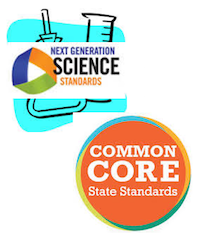
► Or start with a problem and then identify standards-based math and science concepts that can be used in solving this problem. If you start by involving students in identifying a real problem they want to solve, then you already have them “hooked” to begin with.
For example, let’s suppose that your students are interested in an environmental issue such as water quality or soil quality. If they are learning life sciences this year, then one approach might be to help students decide to design an ecosystem that supports a variety of indicator species typically found in healthy water or soil. Use grade-level content standards in life science and math that relate to some aspect of that problem.
What problems can students address?
When your students identify a problem they would like to solve, help them keep it realistic. What have they studied that can help with this project? What resources are available that they can use? A problem involving the environment might be quite realistic. A problem involving space travel – not so much.
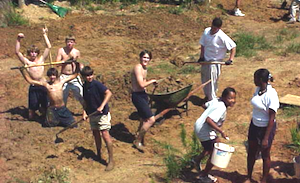
8th graders address water issue.
For a list of real world problems identified by the National Academy of Engineering, visit the Grand Challenges of Engineering website, mouse over the green Challenges button, and you’ll see the 14 challenges identified by NAE. Coming up with student-friendly challenges that relate to these global issues isn’t too difficult. Some that immediately come to mind that kids could work with include solar energy, clean water, managing the nitrogen cycle, and urban infrastructure, including transportation systems and building visually appealing bridges and structures.
How will you measure success?
Think of criteria for success around student behaviors (teamwork), content knowledge (are they able to successfully apply what they have learned in science and math to solve the problem) and thinking skills (to what degree did they show innovation, creativity, etc.). How will you measure these?
Next, did they successfully follow an engineering design process to reach a solution? And if time permitted, did they redesign and improve their device based on trials ? (As an educator, you may be looking for a quick rise in test scores. Know that this gradually happens over two or three years – it’s not necessarily a product of a few months effort, although quick improvements have been noted.)
How will you prepare new students for STEM?
Be sure you don’t “spring” STEM on your students as a surprise. They’ll be more likely to respond productively if they know in advance what to expect. Share MiddleWeb’s Welcome Letter to New STEM Students. This message can work well – perhaps with some adjustments for your specific situation (you can download a Word version). They’ll learn the what and why of STEM, what they will be doing during the lesson, what STEM lessons will require of them, plus other important fundamentals.
How will you teach teams to work productively?
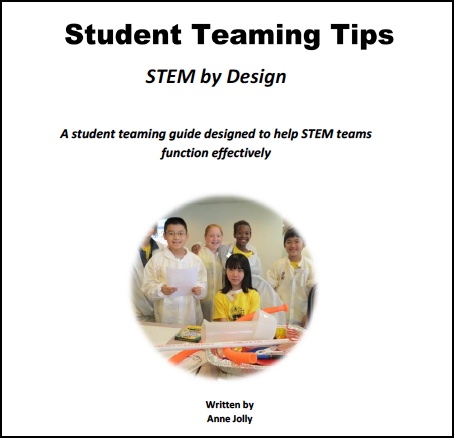
Using the experiences of lots of STEM teachers who’ve learned how to build teams, I’ve developed a free guide Student Teaming Tips you can download here. You’ll find information on how to organize for teamwork, and how to explain why students will work in teams and what their purpose will be. There are also ideas to help students polish their teamwork skills, plus five tools to promote regular student reflection on how they are working as team members. (This is serious stuff!)
What about your own STEM classroom practices?
In STEM classes you will transition from providing instruction to promoting and producing learning. Get ready to ditch some familiar practices during STEM lessons and delve into new ideas and research-based strategies. (Working with a team of teachers would be invaluable in this effort.)
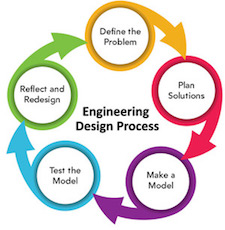
Students need to be able to pose relevant questions, seek multiple possible explanations, test those explanations, and evaluate the results. They especially need to know that it’s okay not to get it right. (They often learn more from what doesn’t work than from what does work.)
Your teaching style should grow out of the idea that students will be rethinking and redesigning as they work to improve their solutions. If you’re like many other teachers who embrace inquiry learning, you’ll be using the same “design cycle” to retool your own classroom practice.
How are you integrating technology?
I always wish knowledge and expertise with technology would just drop into my lap (or brain) out of the sky. That won’t happen. As you zero in on the topics you want to explore through STEM lessons, take some time to think about the right technology pieces “for the job.” Do you need to learn a new app or instrument? Summer is a great time to roll up your sleeves and boost your techy-ness.
Finally – what do you want to accomplish as a STEM teacher?
You may want to know whether STEM helps specific groups of students – perhaps low achievers or special education students – to participate productively and achieve. Perhaps an important goal for you is stimulating interest in STEM among girls or students of color. Decide how you will keep track of this data. This can prove quite useful in making a case for additional resources and administrative support.
As you prepare to teach STEM, I hope you experience the sense of excitement that comes from knowing that what you are teaching matters – both to students and to the world beyond the school yard.


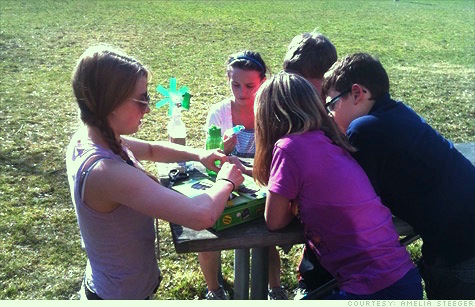


































Please, please, please, don’t forget the arts, humanities and cultures! An architect must know his/her math and sciences, but also must be schooled in design and esthetics. In this ever changing, technological world, educated people must be familiar with speaking other languages and dealing with different products, practices and perspectives of other cultures. Even the most highly intelligent and brilliant medical personnel cannot be called world citizens if they cannot work and deal with all types of personal situations. What would our planet be like if there were no music? How can we have our students study a rigorous curriculum but not recognize beauty in this world? I much prefer the acronym STEAM, which includes the arts and humanities, over the STEM term.
Absolutely right, Emily! Our students must be well-rounded. I’ve written and included a number of blog posts on STEAM.
Asking middle school STEM teachers who’ve specialized in science or math to also teach the arts and the humanities would be daunting, especially given the short time they have to go into deeper and richer science/technology, engineering/math skills. Other subjects can certainly be integrated at the school and district levels, but the individual middle school STEM teacher can only handle so much. I expect most STEM teachers would rejoice over an effort by arts and humanities teachers to effectively collaborate with specific projects.
In the meantime, science and math teachers have been put on notice that they are not preparing their students effectively for needs of the 21st century workforce. In this article I am giving some tips to those teachers for planning and moving forward with that effort.
Thanks for your comments, Emily, and for your impassioned defense of the subjects that create so much beauty and understanding in our world. Here are some MiddleWeb articles on that subject that you might find interesting:
http://www.middleweb.com/10412/rethinking-arts-stem/
http://www.middleweb.com/10493/steam-media-literacy/
http://www.middleweb.com/14118/conundrum-what-is-steam/
http://www.middleweb.com/15943/steam-action/
http://www.middleweb.com/19571/tug-war-stem-vs-steam/
Hi Anne, Thank you for this wonderful article. I would like to know if you can guide me as to how I can be a stem teacher for 2nd grade? Have been trying to incorporate stem/steam in my classroom since last year but couldn’t come up with any real good ideas!
Hi Tammy,
I also teach second grade and last year we started to have a class on Friday afternoons called “Tinker Time.” We taught the kids the design process and allowed them to come up with their own plans for things they wanted to build out of (mostly_ recyclable materials. They drew up plans, made a list of materials and then worked with others to build and redesign as they hit glitches along the way. Sometimes, we gave them specific challenges: design and build something that moves, design and build a boat out of tinfoil that will hold a certain number of pennies, design and build a cardboard building that incorporates elements of the architect Antoni Gaudi’s work, etc. I’d be happy to chat further if you’d like to throw around more ideas!
Sincerely,
Elise
Brookwood School, Manchester, MA
Thanks so much for helping Tammy with this, Elise. Elementary teachers rock! I love that you are using an actual design plan to give kids a framework for thinking about building and constructing. Please continue to chime in any time!
Hi Elise! If you have time, I would love to chat with you about some ideas for elementary. A school I am working with is just in the planning stages of what its STEM program will look like for this year, its first year with a program. My email address is julia.speicher@gmail.com
Thanks for your Tinker Time idea!
Julia
Elise (below) offers a great idea with her Tinker Time class. I’d also suggest that as you teach math and science, you make intentional connections between these two disciplines for kids. And involve them in a project that uses both math and science to solve a problem. It can be as simple as growing several plants (the same species) in different kinds of soil, or with different amounts of light, and taking measurements to see which gets the tallest.
Lesson ideas I suggest for middle school teachers are found here. You might see if some of these steps work well with your second graders. http://www.middleweb.com/4328/12-steps-to-great-stem-lessons/
I share a previous comment….. sTEM is good, but not at the cost of focus on ALL aspects of learning. The arts do matter…. I do not want those who can solve mechanical one science problems without considering how it affects the human side. I do NOT want those who can solve science and math issues with any type of trial and error and understnding WITHOUt the human side. i
I do not want science without human souls!
Bravo, Lynda! Well articulated!
I certainly agree with that. STEM – a focus on math and science – is not intended to be a threat to any other subject. That would be like assuming that focusing on reading is somehow a threat to other subjects. No – it’s a needed focus that is being addressed in addition to other areas. Thanks for helping me clarify that!